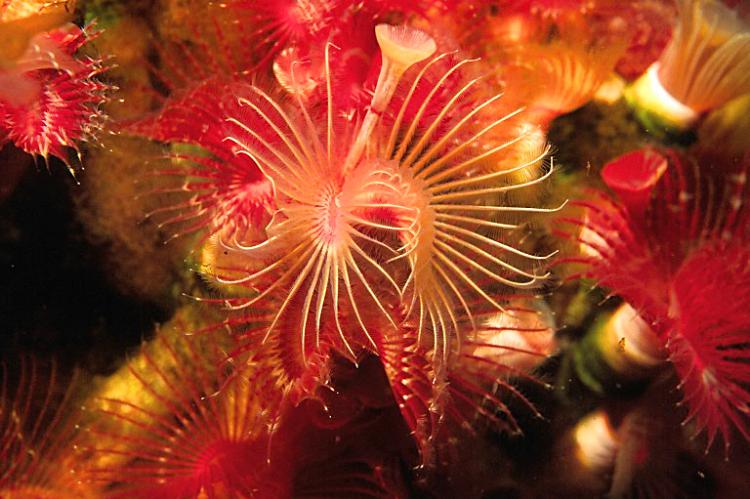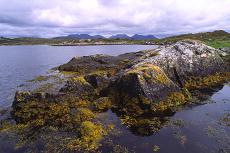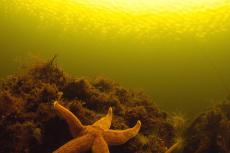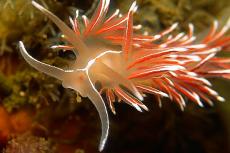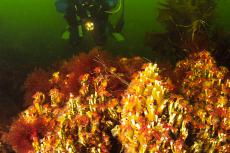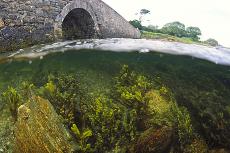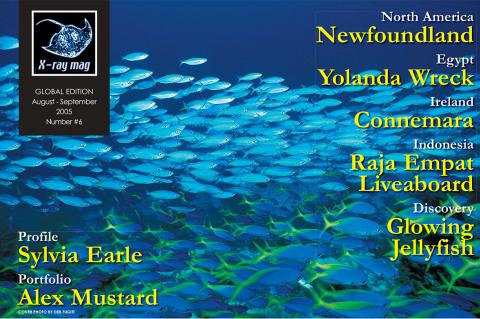Ireland's Connemara
Sliding into brackish water riddled by a seasonal downpour might not be everybody’s idea of a week-end in the Wild West...but for the frustrated winter diver that I am, there is sometimes nothing like the peaty waters of Connemara.
Connemara loughs are like proverbial watering holes: there is no shortage of them. Water is not exactly a rare commodity around here, above and below, out of the heavens it comes in every colour, salted, fresh, not so fresh or with a seasonal Guinness tint. In late summer, a plankton bloom and peat water conspire to create visibility averaging chowder-like conditions, at best. To cap it all, clouds of jellyfish pulsating by don’t help improve the visibility. What a contrast with the clear waters of the Atlantic nearby!
Fed with seawater and fresh water from nearby rivers, sea loughs can bring together an odd mixture of life resulting from the interchange with the sea. A slight current is noticeable with the tide and water clarity can improve. It is a great spot for watching passing shoals feeding by. Shoals of garfish and rainbow trout are not uncommon.
Depending on their relation to the sea, some loughs seem deprived of any visible life, others are just teeming with it. With sea loughs, a layer of brackish fresh water sits over the layer of salt water. In the summer, as the sun filters through the surface, the water takes on an eerie post nuclear glow. The surface halocline acts like a filter and blocks off daylight, soaking up whatever sunshine dares find its way over Connemara.
Mysterious Shallows
Moving along the shallows reveals a sandy bottom of broken shells and gravels. Not the typical mud plain. Beyond the shallows brings you into deeper waters, and in some areas the slope falls sharply into 20+metres. With limited visibility, many dwellers are camouflage experts and blend in with their environment, it takes a while to adjust and spot them. A lot of these mud hoppers are more curious than their sea counterparts, they will come out to gawk at the tourists, stare and hop out of reach.
In places, tubeworms have congregated in huge numbers and developed into full-grown reefs. Clumps of red, orange, yellow and white serpula (tube worms) are fanning themselves in a gentle current. This is the closest I’ve seen to a live underwater Christmas tree. Sitting on a hard base of white tubes, they really stand out against the muddy lough bed. At feeding time, with the reefs in full bloom, the bottom suddenly comes alive.
These reefs are very much alive and support a variety of animals. The colonies of tubeworms act as a magnet for several species and diversity is the order of the day. Sleepy edible crabs are found ...
(...)
Download the full article ⬇︎
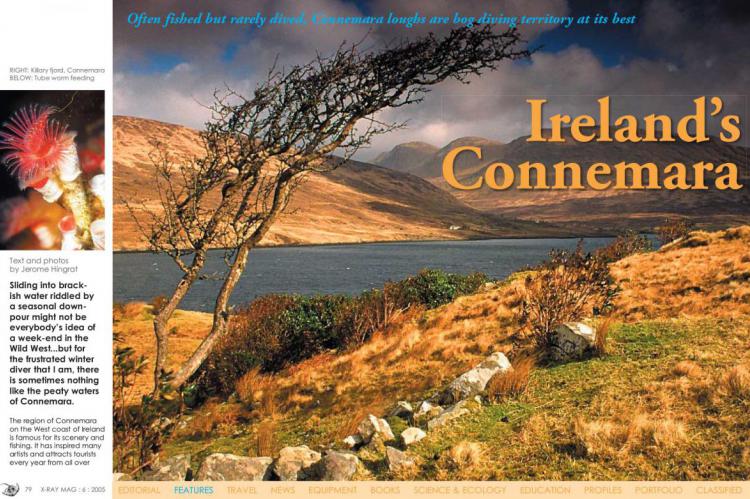
Originally published
X-Ray Mag #6
New Foundland, Canada. Raja Ampat, Indonesia. Marine Insects - walking on water. Glowing Jellyfish. Diving rebreathers, what is it like? Ireland's Connemara. A visit to Cressi-Sub. Technical Matters: Tables vs Computers. Profile: Sylvia Earle. Yolanda Wreck - where did she go? Portfolio: Alex Mustard


